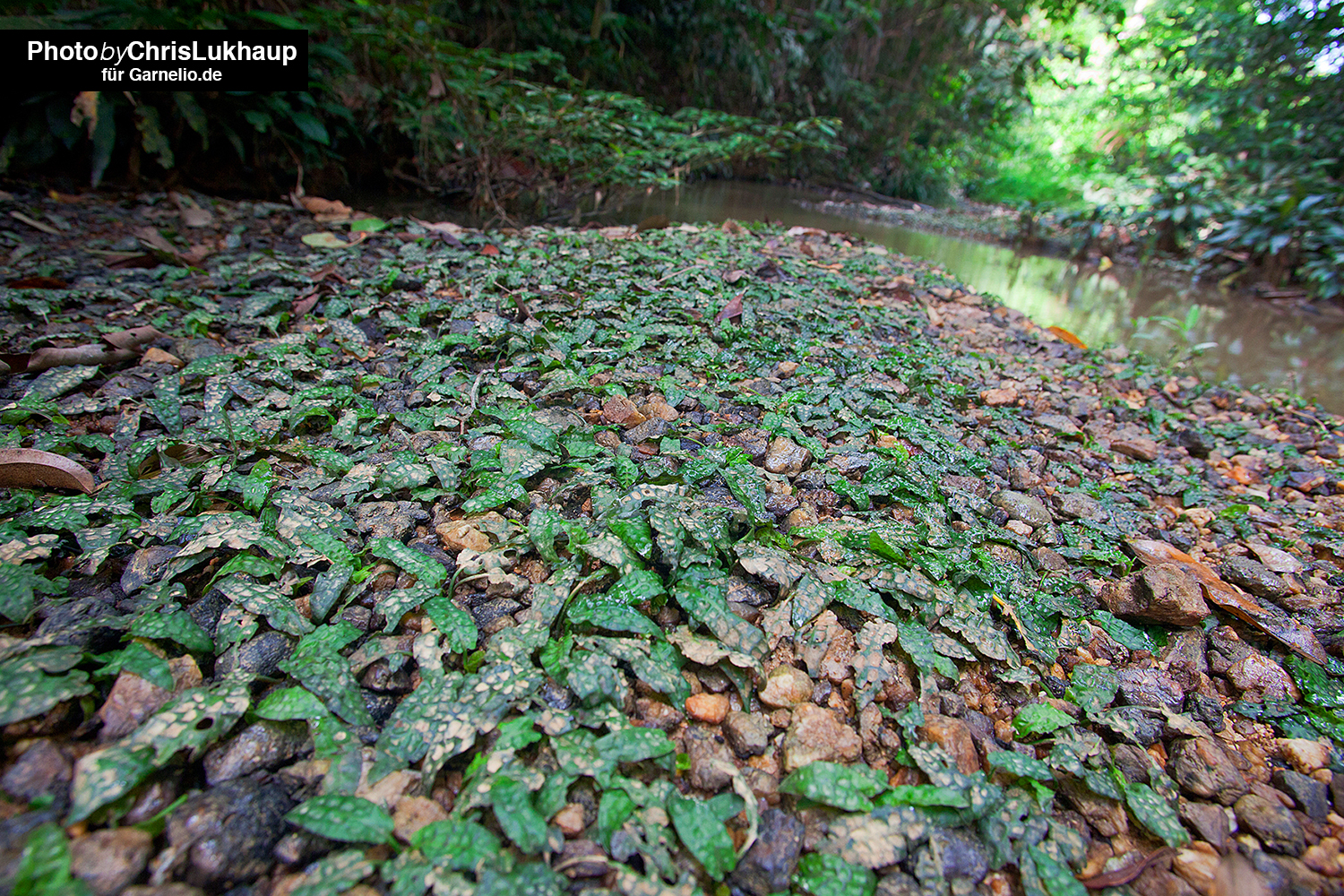Cryptocorynes / Water Calyxes - XXL Blog
Many of the popular, easy to keep and yet beautiful looking diverse Cryptocoryne species and varieties are classic mid-ground plants because they do not grow so tall and also because they are quite shade tolerant. They are therefore well suited for underplanting taller stem plants, roots or stones. The undemanding Cryptocorynen belong to the Aronstabgewächs like Anubias. They are considered perch resistant because the leaves taste quite bitter and are therefore not readily eaten, and they are great aquarium plants for beginners.
Propagate Cryptocorynes
Propagate them by cutting off the daughter plants that form on the rootstock. This is best done with sharp scissors.
Cryptocorynes care
Cryptocorynes grow slowly and therefore do not require much effort to care for. If the bush becomes too dense, you can thin it out a bit with the help of sharp scissors. The leaves are cut off directly above the rootstock. Old leaves that have become unsightly are also removed in this way. If the bush becomes too large, the rootstock can be divided.

Cryptocoryne rot - what is behind it?
Notorious is the so-called cryptocorysis rot. If plants are affected by it, within a very short time all leaves become glassy and die - which looks dramatic. In English, the phenomenon is called "Crypt Melt", a name that describes the process very well. The reason for this dieback is not a disease, but it is a reaction to changing environmental conditions. The leaves then no longer fit the environment and are "discarded". As a rule, the rootstock sprouts again and forms new, suitable leaves. Dieback can be prevented by regular partial water changes and a steady supply of nutrients. A daily fertilization with a smaller amount should be preferred to a weekly surge fertilization.
Cryptocorynes above the water level
Cryptocorynes can also be grown above the water level if the air is humid enough. For example, they are a great stock for the terrestrial part of a waterfall aquarium or a paludarium. They also look beautiful in an aquaterrarium, and in a wetland terrarium for dendrobates or land crabs such as Geosesarma, for example, Cryptocorynes can be used to create a beautiful and somewhat unusual planting. In land form, Cryptocorynen then also come to bloom. Their spatha is beautiful - green, brown or yellow, pink or even white ... and in some species the petal is even spirally twisted.
Overview - species presentation
There are countless species and varieties of Cryptocorynes in aquaristics, here follow only the most popular and widely used in overview.
Cryptocoryne affinis - Härtel's water lily, Flamed water lily(pot)
This traditional Cryptocoryne comes originally from Malaysia. The underwater form grows 30-40 cm high and has brown mottled olive-green leaves with wine-red underside. It prefers rather hard water and is very suitable for cichlid aquariums.
The land form is much lower and the leaves remain pure green.

Cryptocoryne beckettii - Beckett's Water Cichlid(InVitro/Pot/OnLava)
A proven and popular Cryptocoryne for the middle ground, with 15-25 cm perfect also for larger aquariums, with brownish leaf undersides and strong green to olive green leaf tops, sometimes showing fine dark red stripes.
When grown on land, the leaves become somewhat firmer than the submerged form.
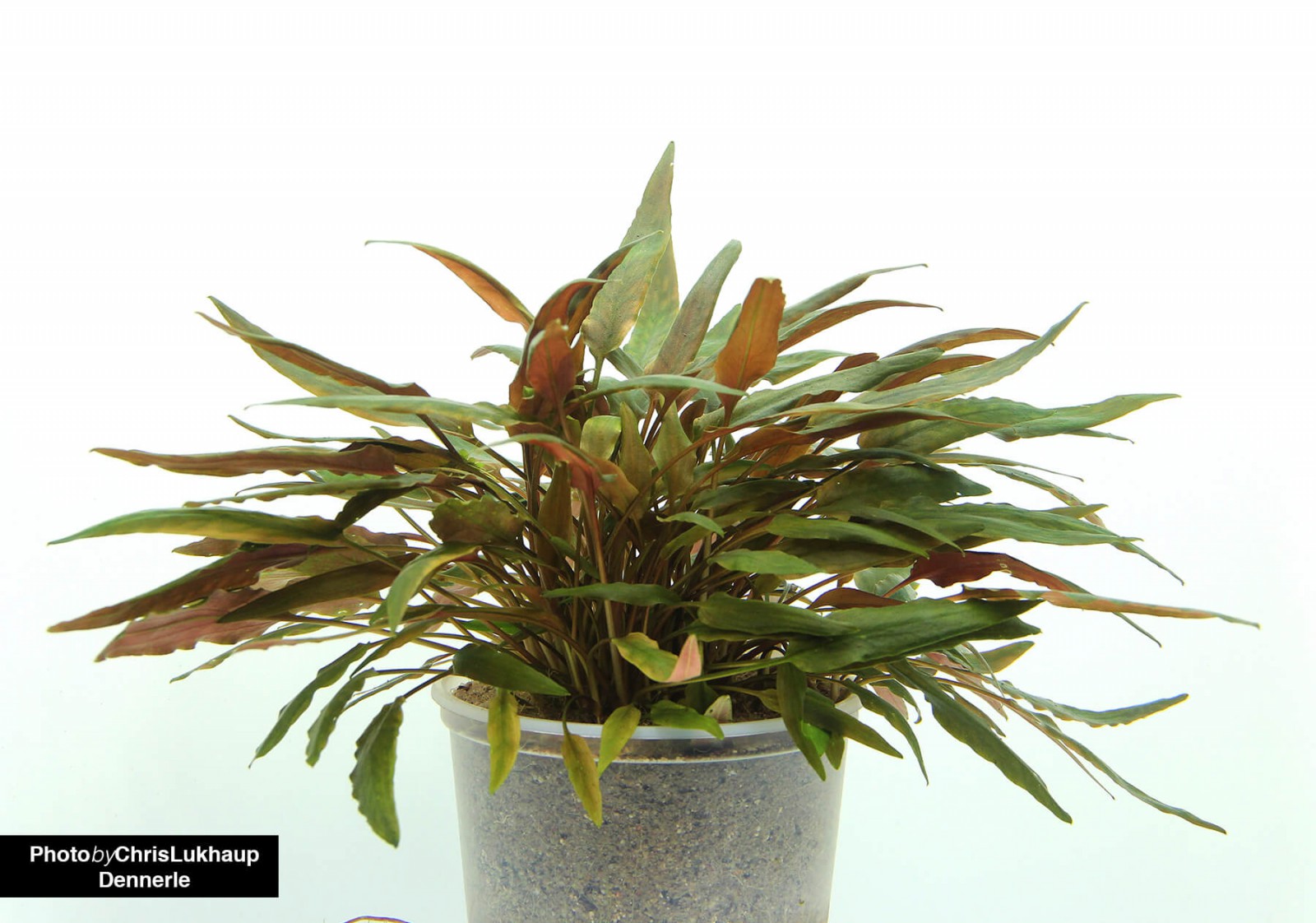
Cryptocoryne cordata - Heart-leaved water lily(Invitro)
Cryptocoryne cordata is a beautiful species of water lily from Southeast Asia that grows to about 20 cm tall, and its leaf shape and color can vary greatly. The leaves are slightly reddish to green, often with a beautiful streak pattern, and their shape is ovate narrow, not as heart-shaped as the namesake type. This Cryptocoryne likes rather soft water, but can be acclimated to harder water after a period of acclimation.
Emersed grown Cryptocoryne cordata look quite similar to the submerged form, but the leaves appear somewhat more compact.
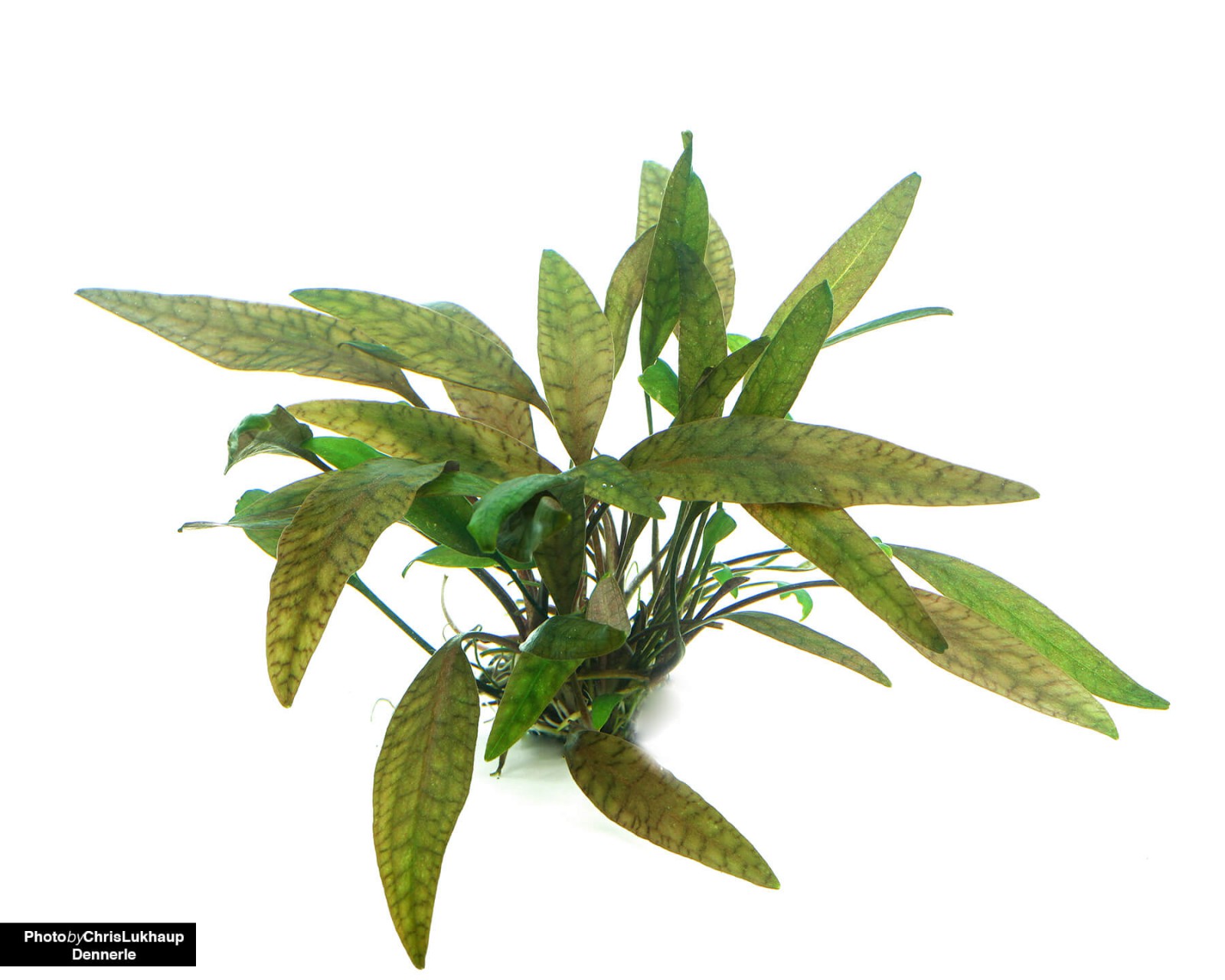
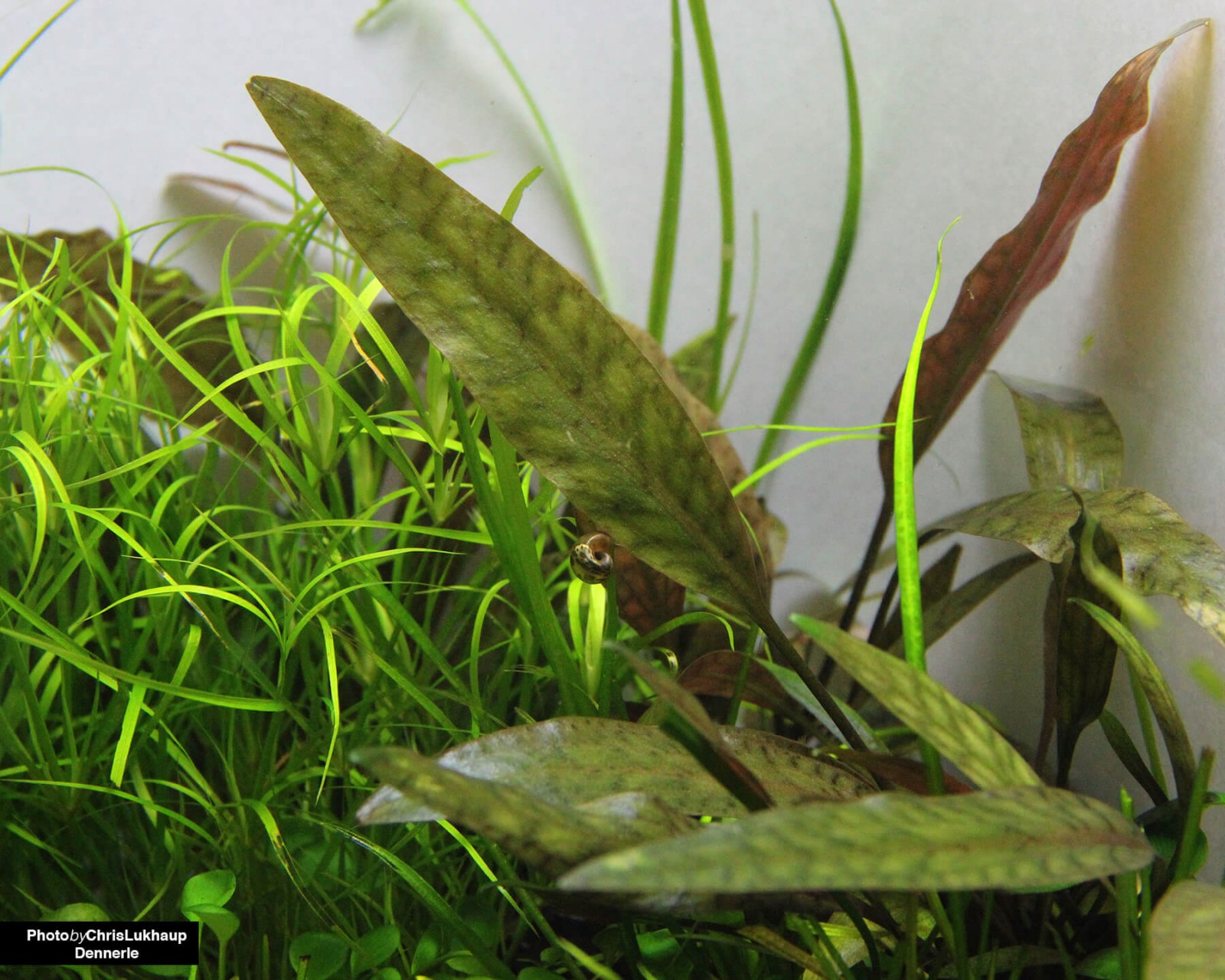
Cryptocoryne crispatula - Grass-leaved Water Coryne(InVitro)
The long, narrow leaves of the Grass-leaved Water Lily are knobbed and remain rather brownish. This Cryptocoryne can tolerate very hard water. The leaves grow up to 60 cm long, making it more of a nice plant for larger aquariums and a great, not-so-invasive alternative to Vallisneria spiralis.
This Cryptocoryne also cultivates well on land. The dark green leaves remain shorter in emersed conditions and are quite stiff.
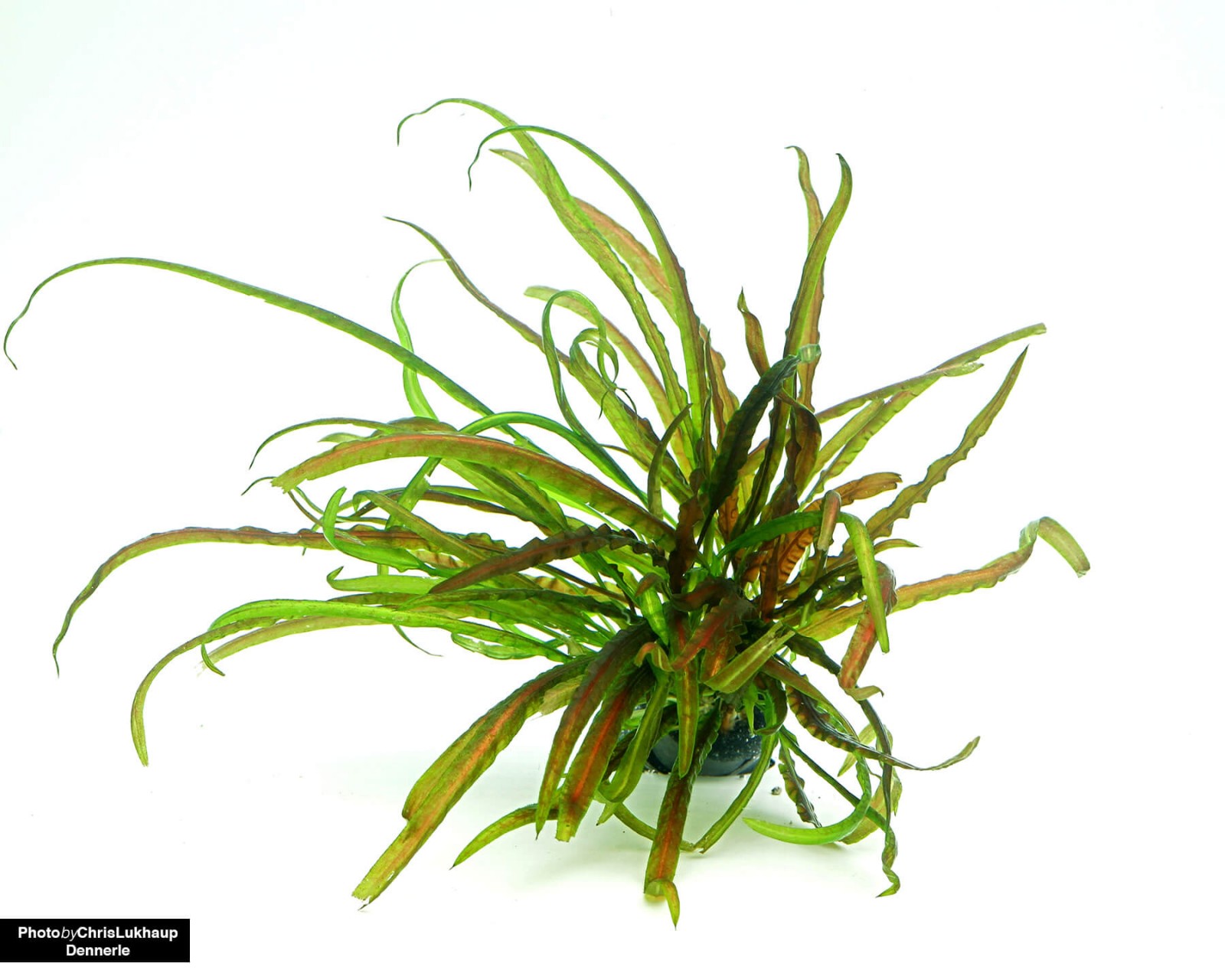
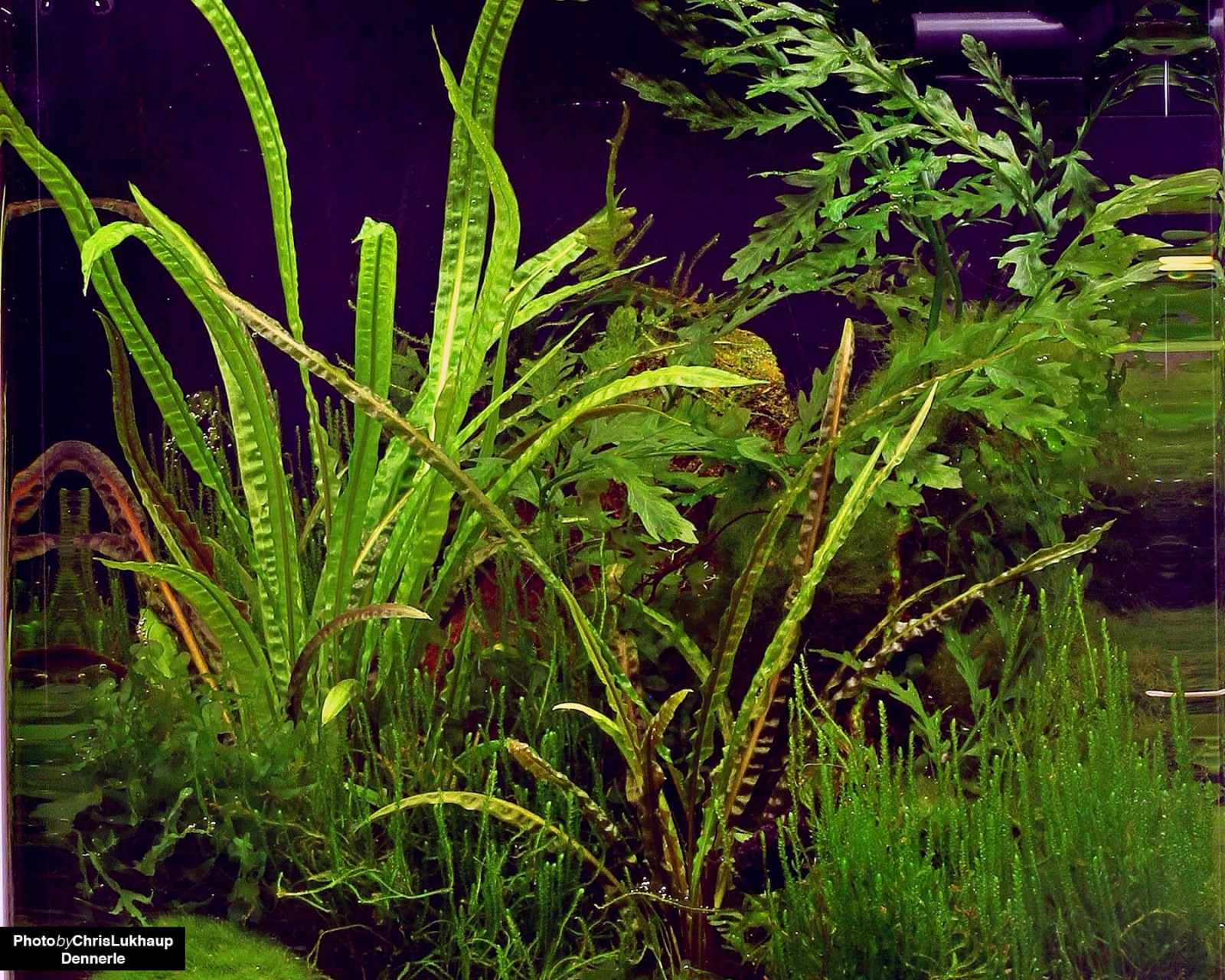
Cryptocoryne crispatula var. balansae - Blansas Water Coryne, Grassy Nubby Water Coryne(pot)
The distinctly nubby grass-like leaves of this subspecies of Cryptocoryne crispatula from Thailand are beautiful. At 70 cm long and 1-4 cm wide, they are a great alternative to the more sprawling Vallisnerias. This Cryptocoryne likes rather hard water and becomes rather stately.
The leaves of the land form are smooth, stiff and much shorter.
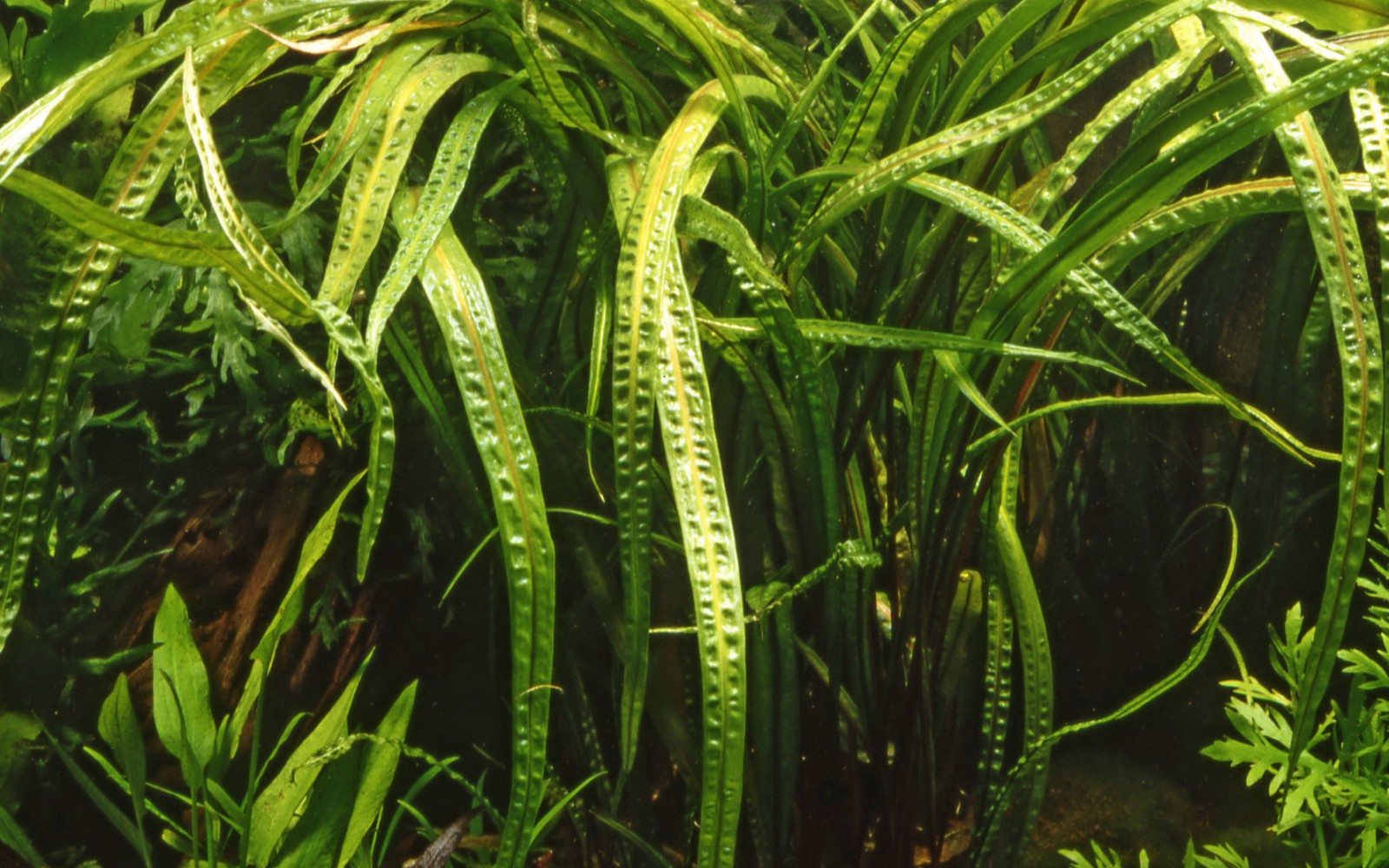
Cryptocoryne crispatula var. tonkinensis - Tonkin Water Coryne(InVitro)
With its elegant, distinctly narrow leaves, the 10-25 cm tall Tonkin Cryptocoryne can be used well as a grass-like plant in the middle ground. It also looks very nice in large Iwagumi aquascapes, where it can be used excellently as an underplanting for the main stones or to break up the grassy landscape.
Tonkin water lily also grows very nicely emersed in the wet terrarium, where the leaves become a bit bulkier than underwater, but remain about the same in size.
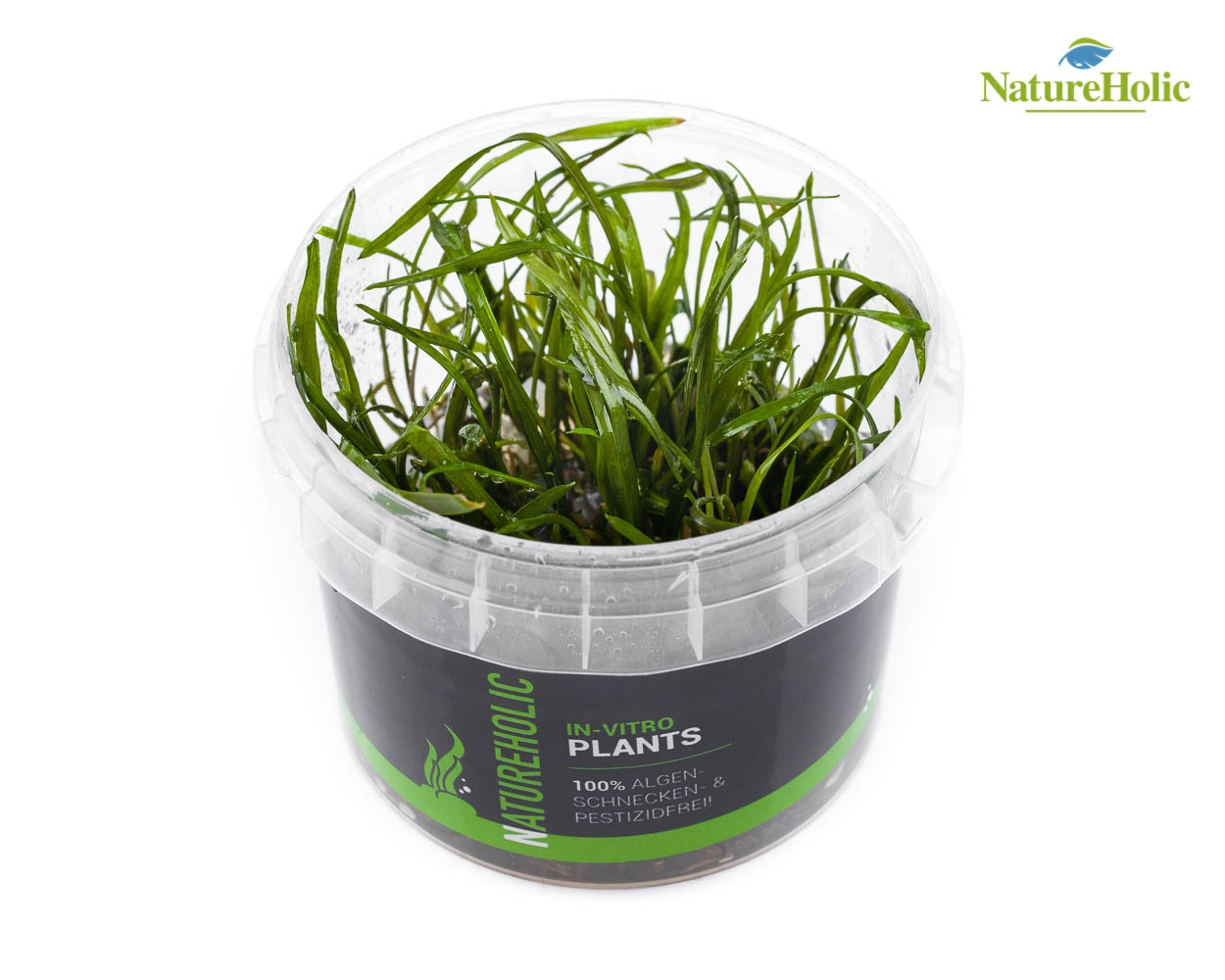

Cryptocoryne walkeri "lutea" - Walker's Water Lily, Yellow Water Lily(pot)
Formerly known as Cryptocoryne lutea, this 10-15 cm tall aquarium plant has since been assigned to the species Cryptocoryne walkeri. The pretty green leaves have a brown line pattern. It is very rare and not easy to get - a rarity in the aquarium!
The emersed plant looks quite similar to the submerged form.
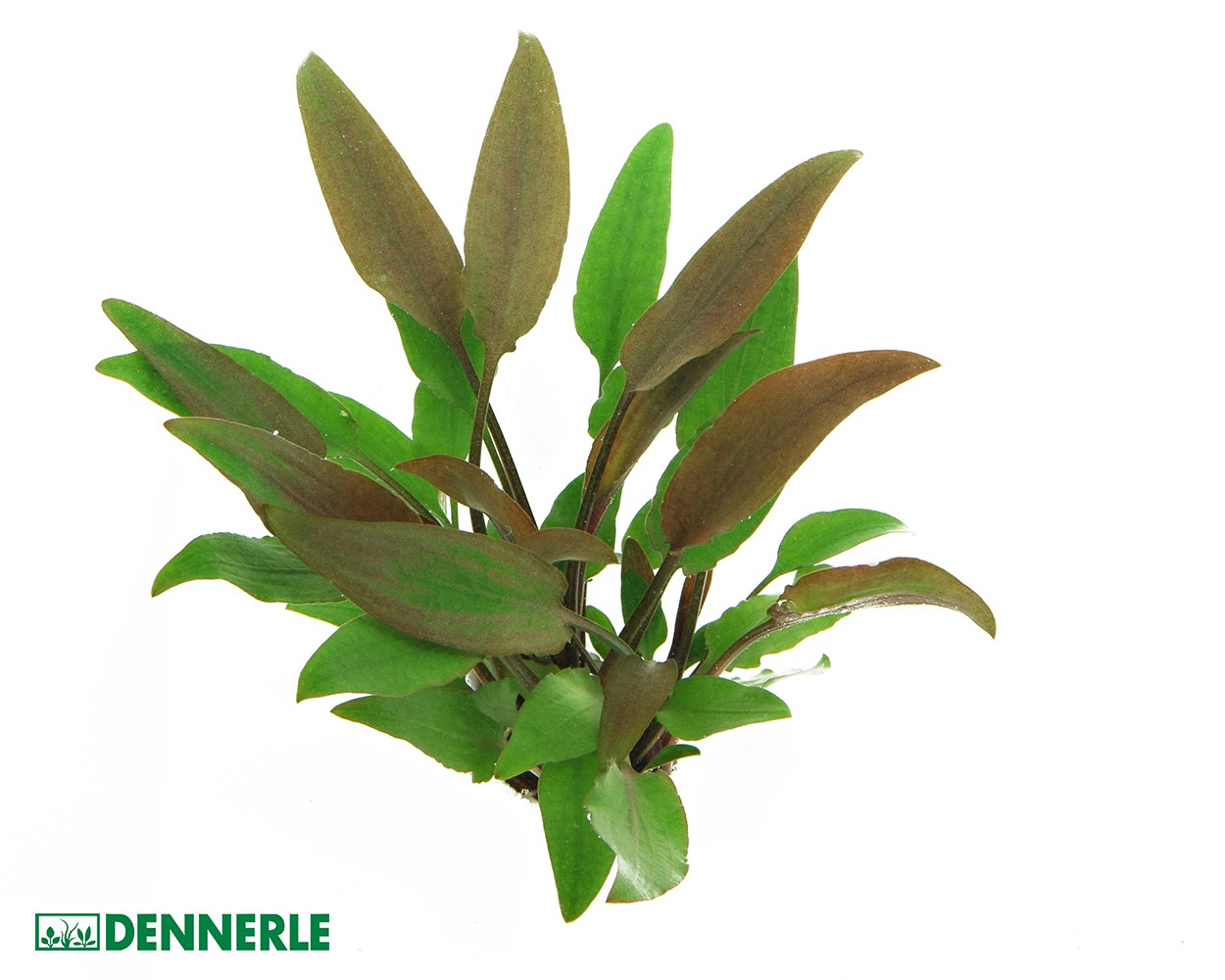
Cryptocoryne parva - Dwarf Water Chalice(Pot/Invitro)
With a growth height of only 5-7 cm this very slow growing, small remaining green dwarf form is rather something for the middle ground of nano aquariums or for an iwagumi aquascape, i.e. a rock landscape with grass planting. The dwarf water carnation is the smallest known Cryptocoryne species. It needs medium to strong light and is grateful for a CO2 supply as well as fertilization via the roots (for example with fertilizer balls or GroundBooster). Even then, however, it still grows extremely slowly.
The land form grows a bit faster, but is quite comparable in terms of growth habit.


Cryptocoryne ponterderiifolia - Heartleaf Cryptocoryne, Heartleaf Water Coryne(InVitro)
This water carnation from Sumatra is unproblematic and adaptable. It convinces about 20-30 cm long heart-shaped leaves, which look a bit like Anubias leaves. The more light it gets, the bushier it grows. It may take a while to adjust to the conditions in the aquarium. Heartleaf Cryptocoryne does not tolerate very hard water.
Emers you can grow Cryptocoryne pontederiifolia also very well. The aerial leaves are slightly smaller and more compact than those of the submerged form.
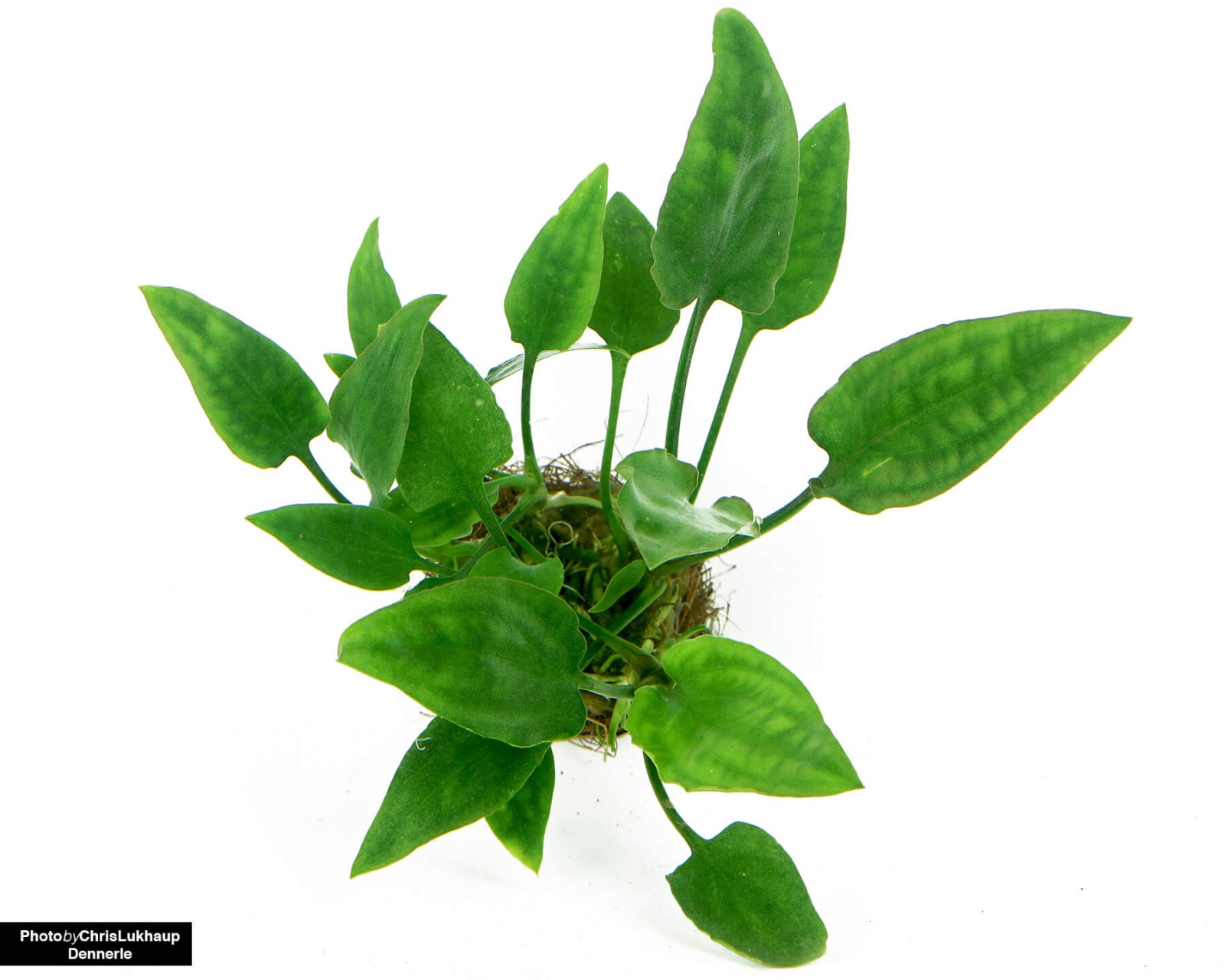
Cryptocoryne retrospiralis - twisted water lily(pot)
The name "Twisted Water Calyx" refers to the twisted shape of the flower's bracts, the spatha. This narrow-leaved Cryptocoryne species is rarely available in the trade, and it was only thanks to Stefan Hummel of the Dennerle company that it was able to establish itself. The twisted Cryptocoryne from India grows to a height of 15 to 40 cm and thus fits into the middle ground of very large aquariums or in the background.
Like the submerged form, the land form has linear leaves that can grow 15 to 40 cm tall.
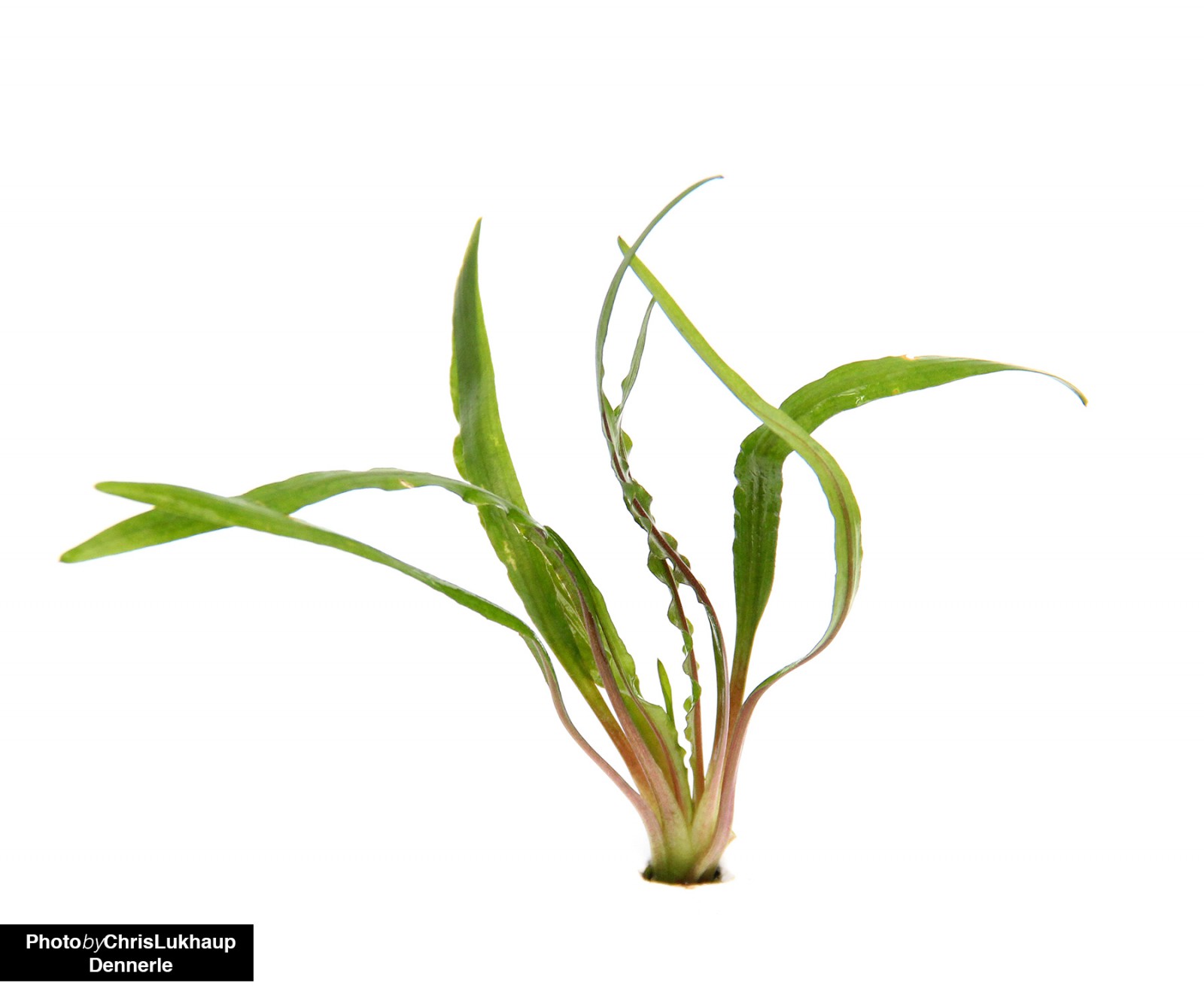
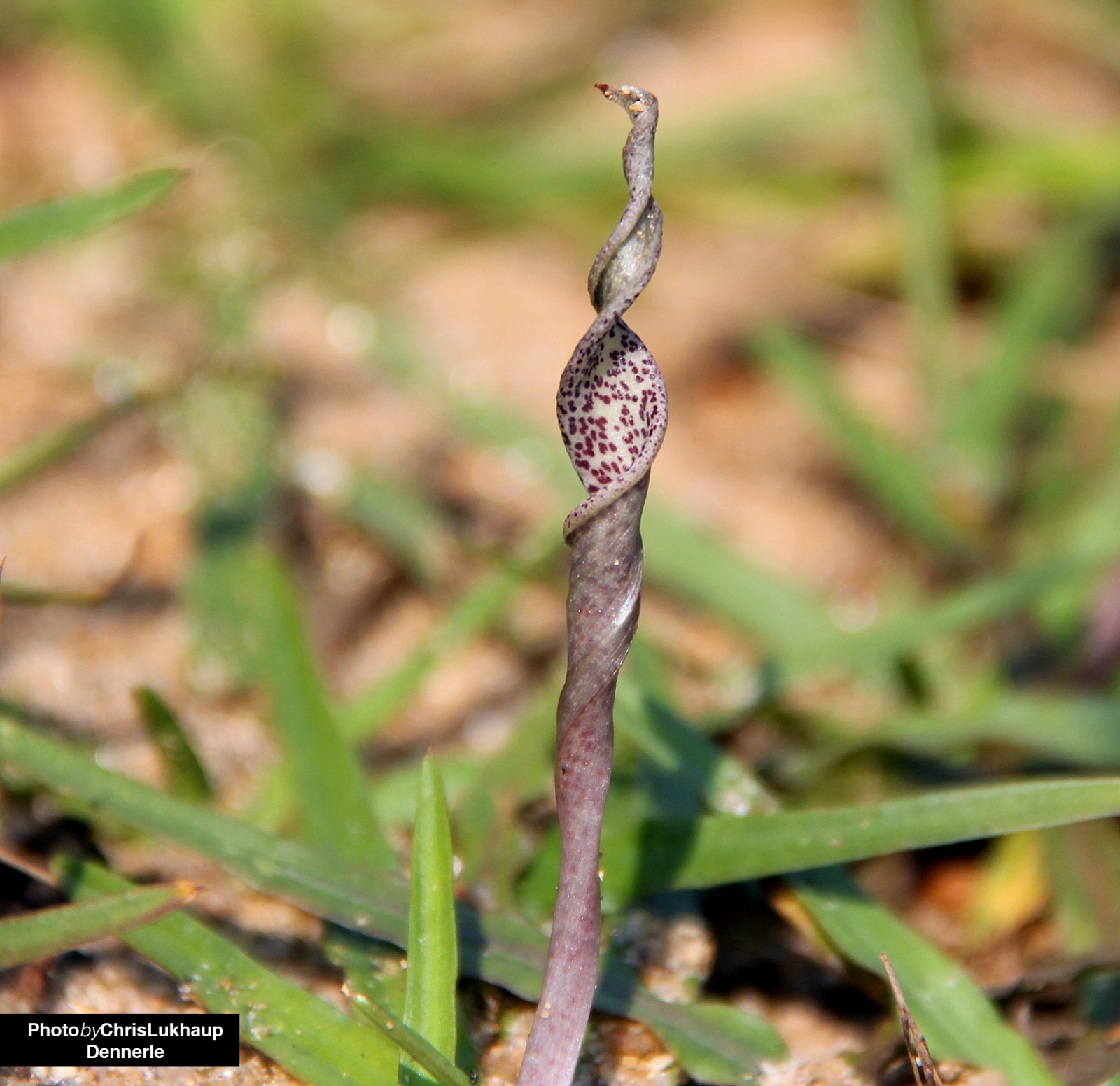
Cryptocoryne sivadasanii - Sivadasan's Water Coryne(Pot)
This unusually narrow-leaved Cryptocoryne, with a growth height of 40-120 cm, is somewhat reminiscent of a Vallisneria, but it is nowhere near as invasive and does not reproduce as rapidly as the nevertheless very high-maintenance Vallisnerias. It has only been commercially available since 2016 and is thus still a real rarity.
The land form of this water carnation, on the other hand, develops very short and narrow leaves that look a bit like stiff blades of grass.

Cryptocoryne spiralis - Spiral water lily(pot)
The narrow-leaved Cryptocoryne spiralis from India grows rather large with a leaf length of about 40 cm. Its ribbon-shaped wavy leaves are permanently bright light green - unusual for a Cryptocoryne. It still grows very dense and compact even with little light.
The leaves of the land form are much shorter than the submerged leaves and much stiffer.
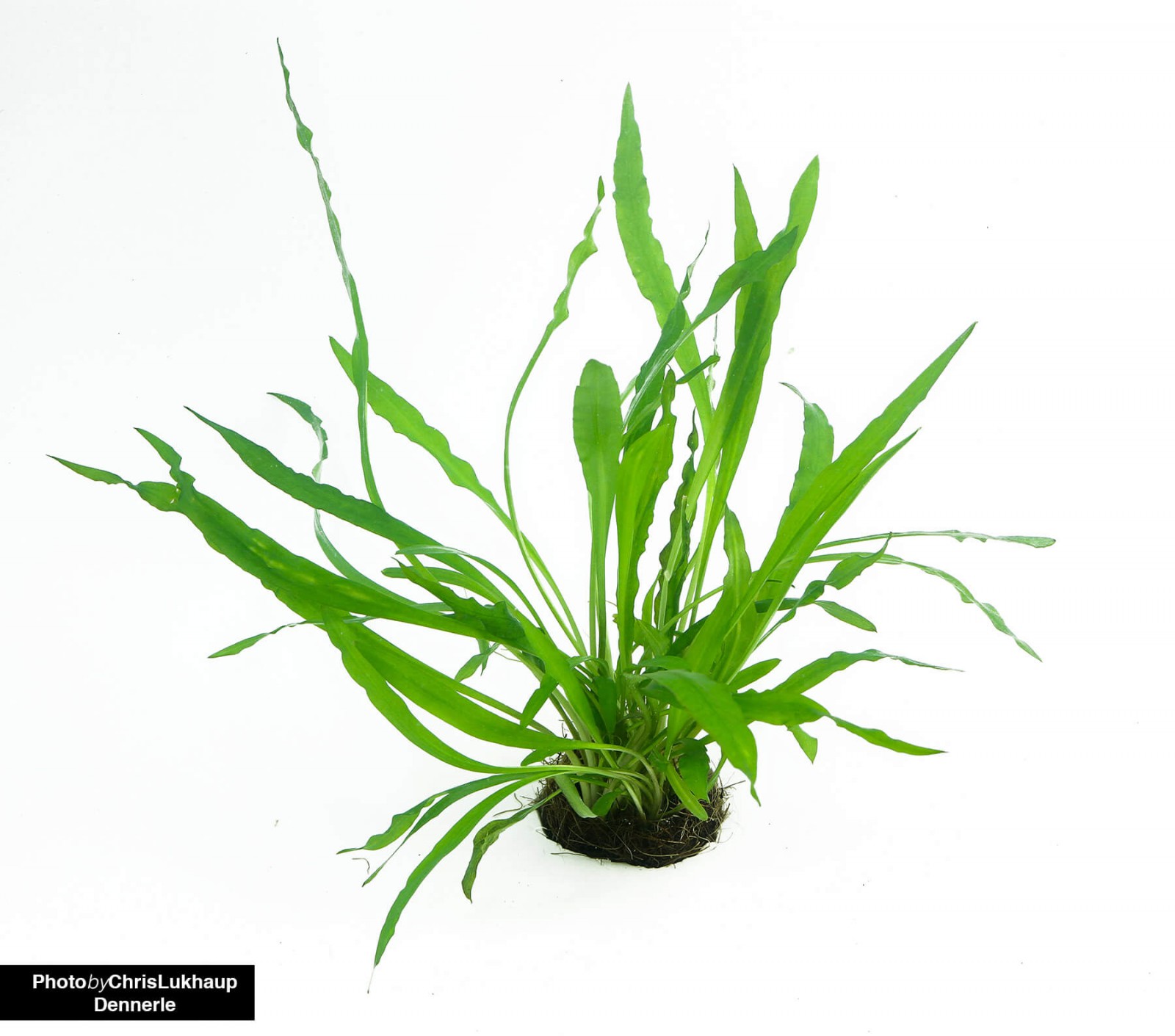
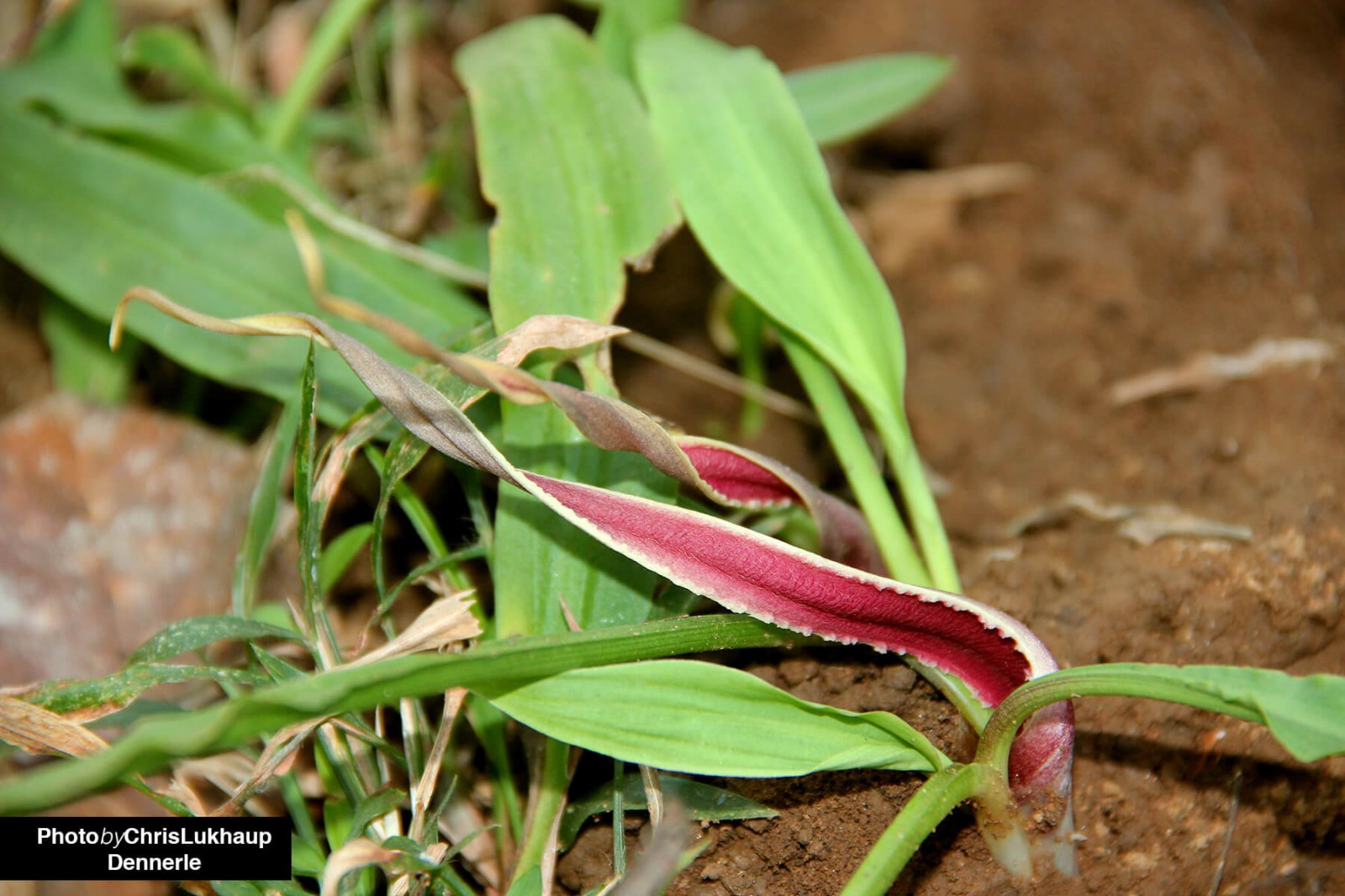
Cryptocoryne undulata - Wavy Water Coryne(pot)
Cryptocoryne undulata has wavy, brown-green to brown marbled leaves. It grows only about 20-25 cm tall and fits beautifully in the aquarium middle ground. Under low light, the leaves tend to strive upward; under high light, they grow flatter and stand more densely.
The leaves of the land form are green with reddish veins. They grow wider than the submerged leaves and about the same length.
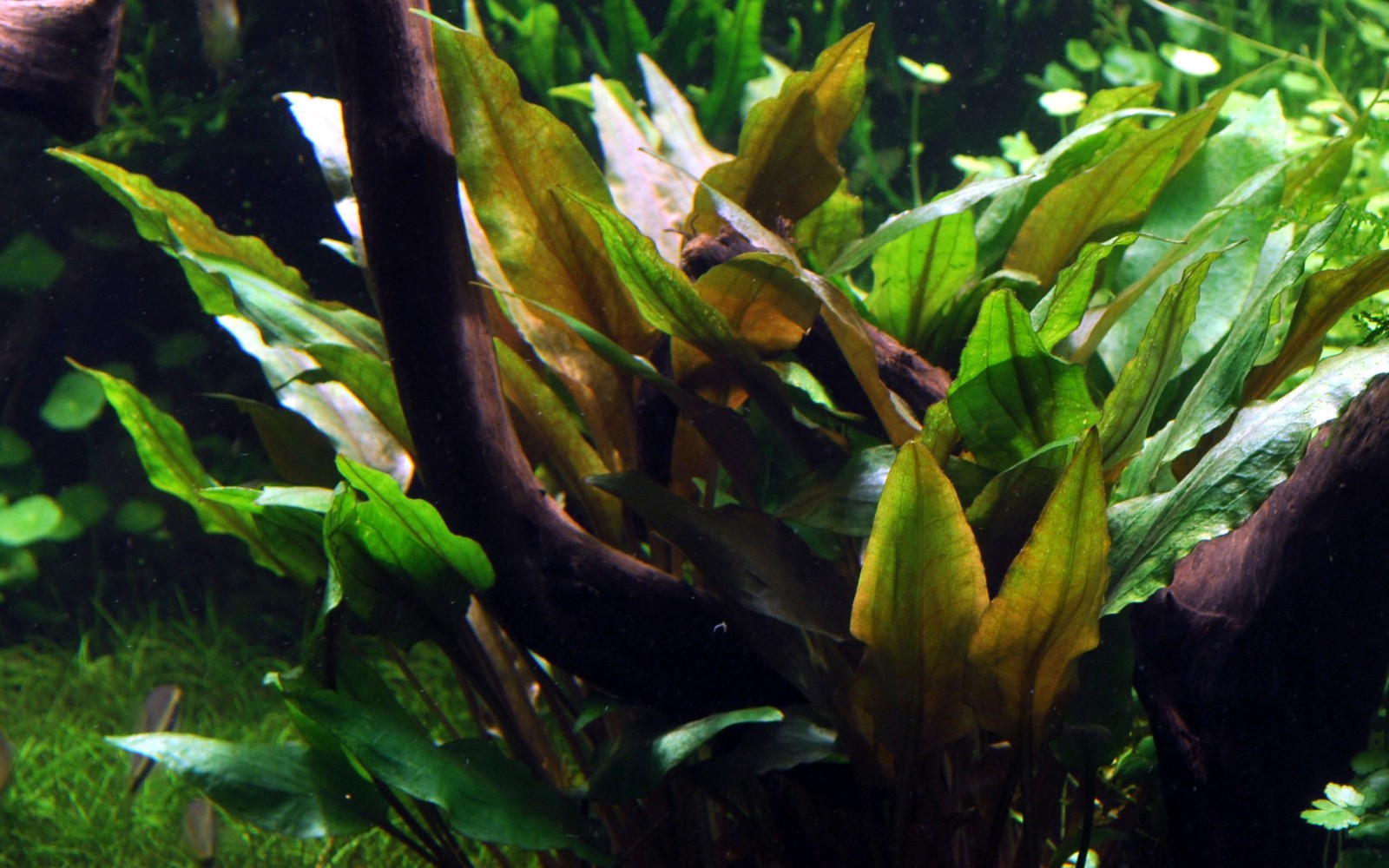
Cryptocoryne usteriana - Giant water lily, Usteris water lily(pot)
This Cryptocoryne is a pure aquatic plant, it cannot be grown emersed. Its long, regularly knobbed leaves have a wine red underside and a deep green leaf top. With a growth height of 70 cm, it is beautifully suited for the background of tall aquariums. It grows best in hard water, making it an optimal aquatic plant for cichlid aquariums.
Not suitable for emerse growing.
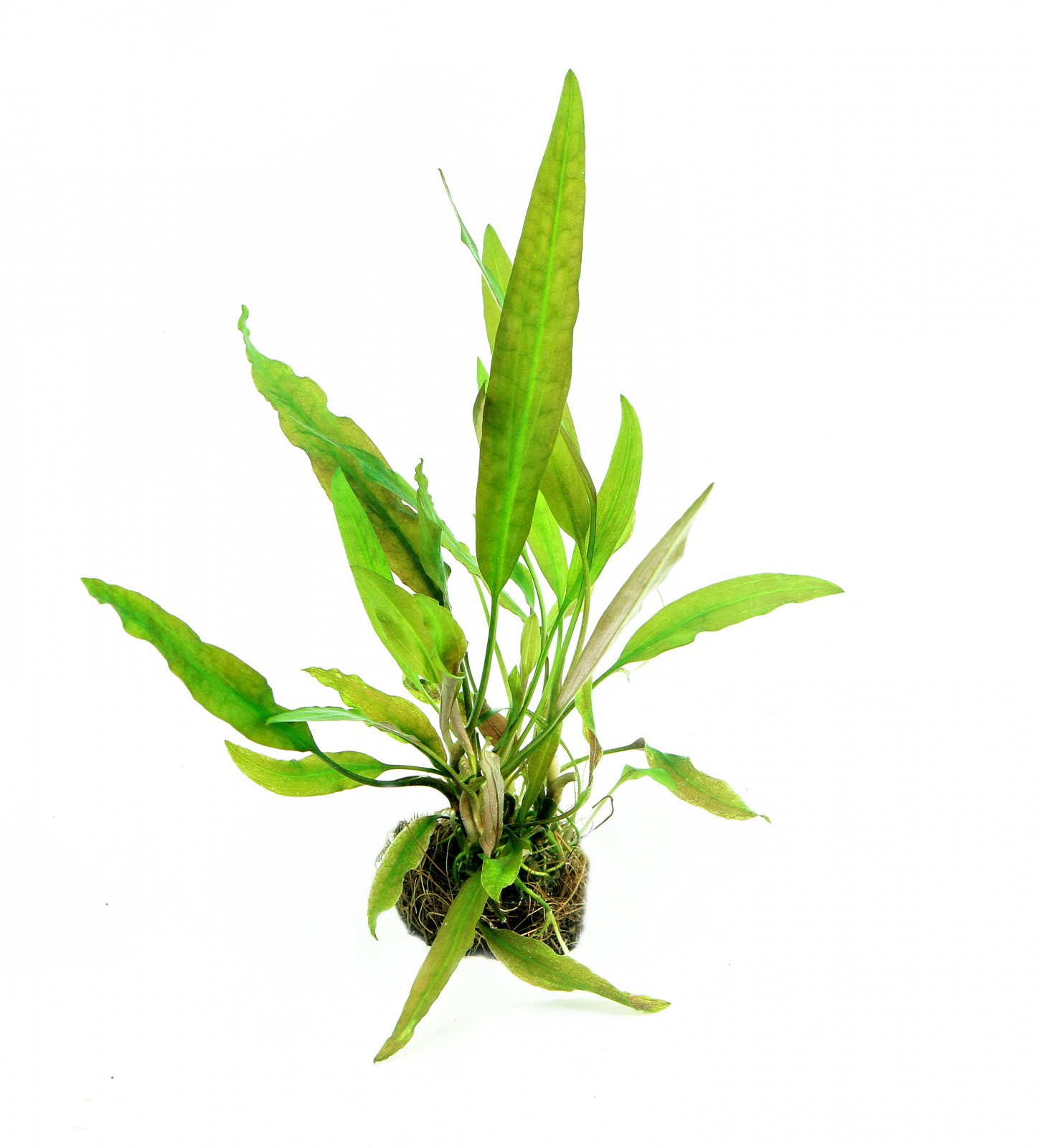
Cryptocoryne wendtii "Broad Leaf" - Broad-leaved Water Coryne, Broad-leaved Water Coryne(InVitro)
This Cryptocoryne also grows only 10-15 cm tall and has unusually broad intense green leaves, some of which may also show a brown flame pattern.
The terrestrial form grows slightly faster than the submerged form.
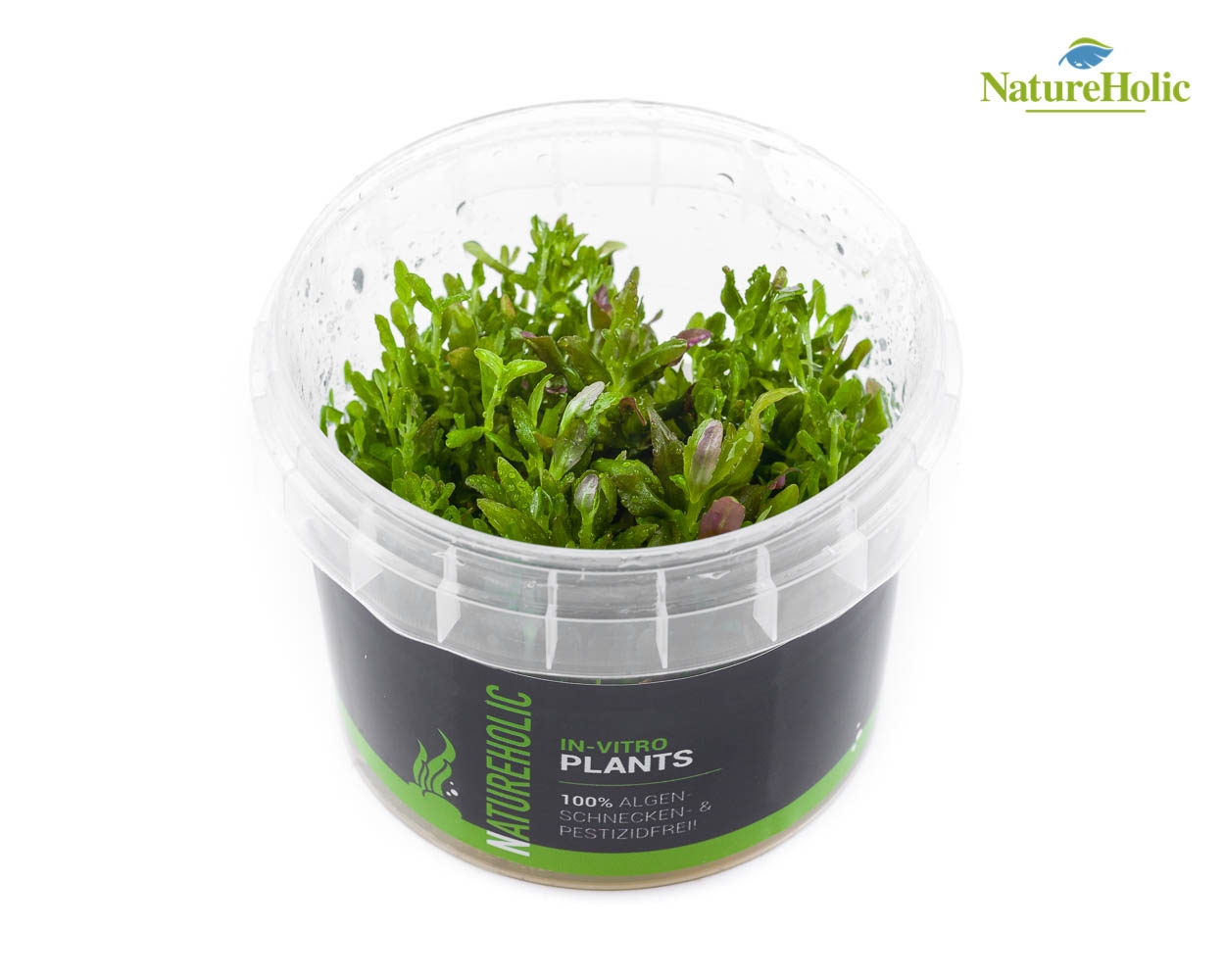
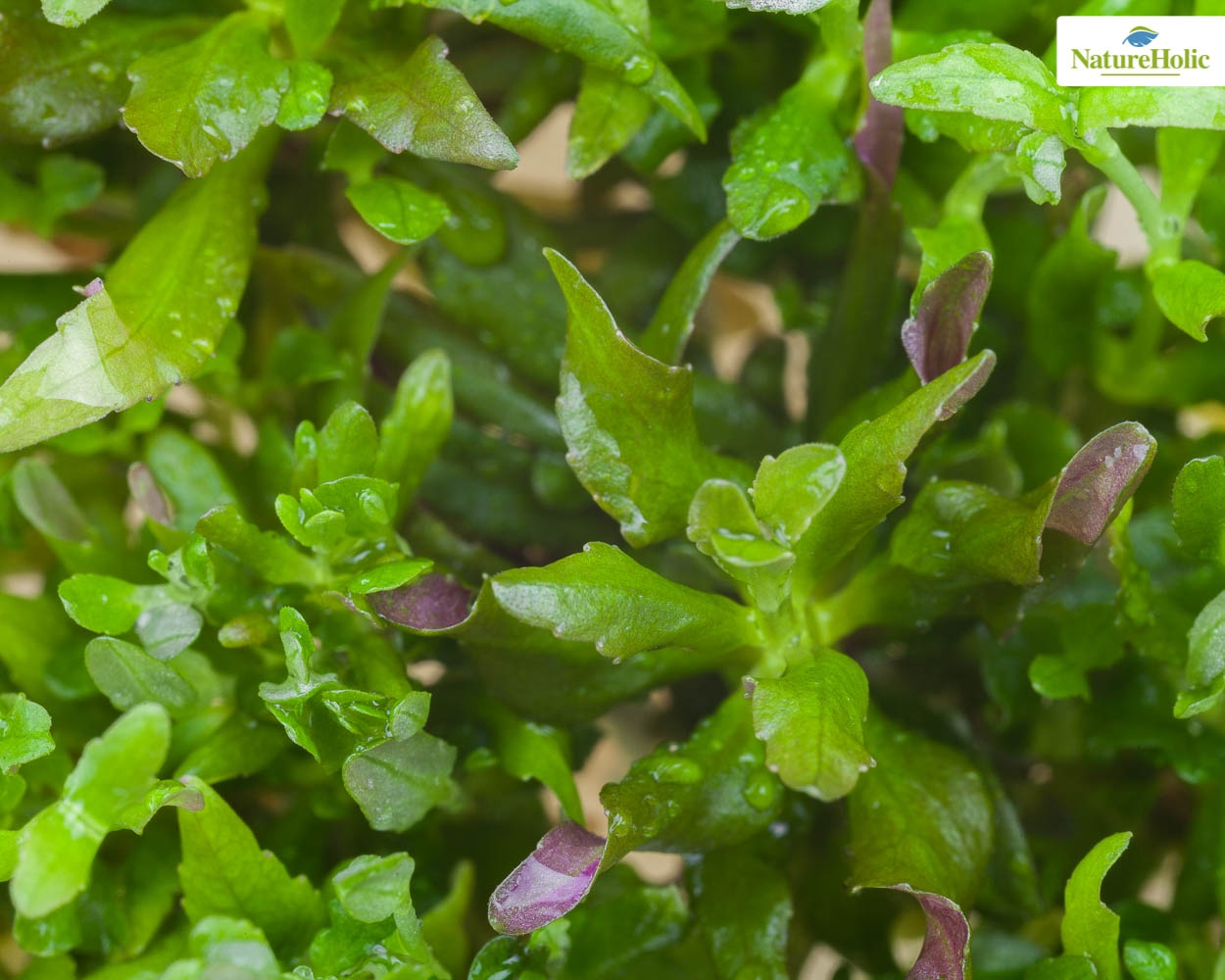
Cryptocoryne wendtii "Brown" / Cryptocoryne wendtii "brown" - Brown Wendt's Water Lily, Brown Water Lily(InVitro/Pot)
This water carnation is an aquaristic classic. It grows only about 25 cm high and has dark olive green to brown leaves - this creates nice contrasts against green background plants.
A Cryptocoryne wendtii "Brown" grown on the land part looks a bit more "stable" overall. The change to the land form is relatively unproblematic.
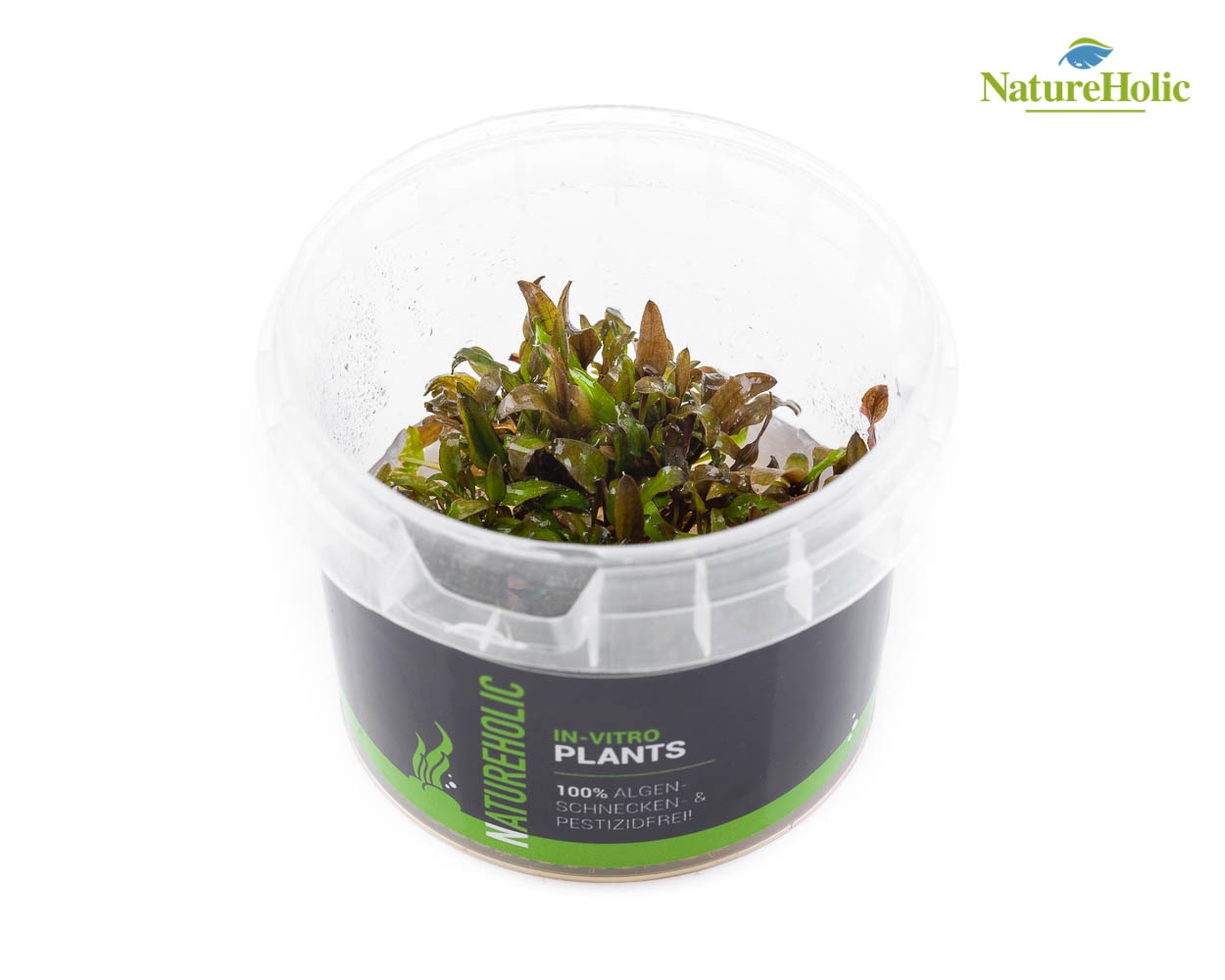
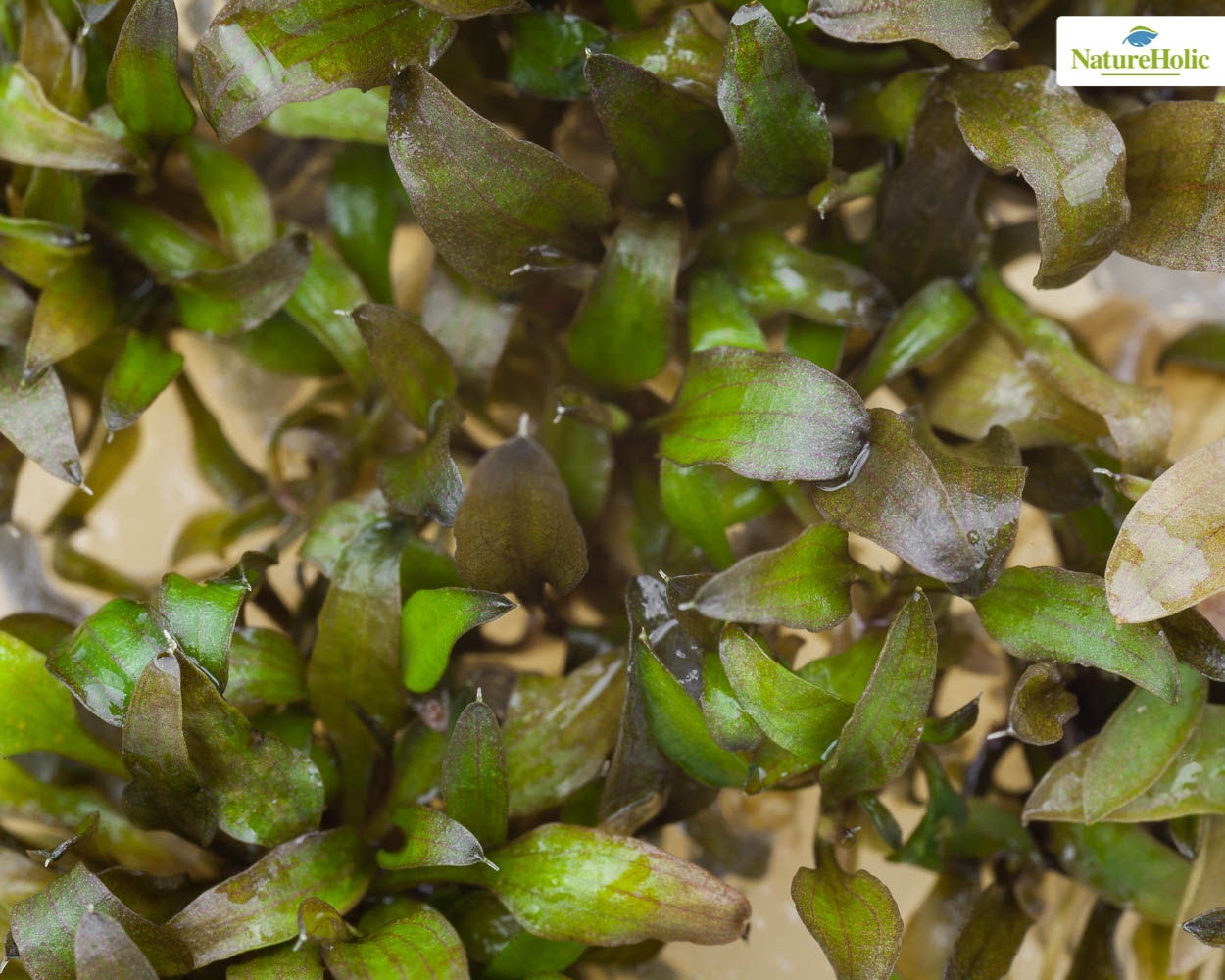
Cryptocoryne wendtii "Green" / Cryptocoryne wendtii "green"- Green Wendt's water lily(InVitro/Pot)
Cryptocoryne wendtii "Green" remains somewhat smaller than the brown variety. It grows only about 5-10 cm tall and is pure green in color. The Green Cryptocoryne wendtii is therefore well suited for the middle ground in a smaller aquarium or a nano tank.
The land form grows slightly larger, but also grows only medium fast.

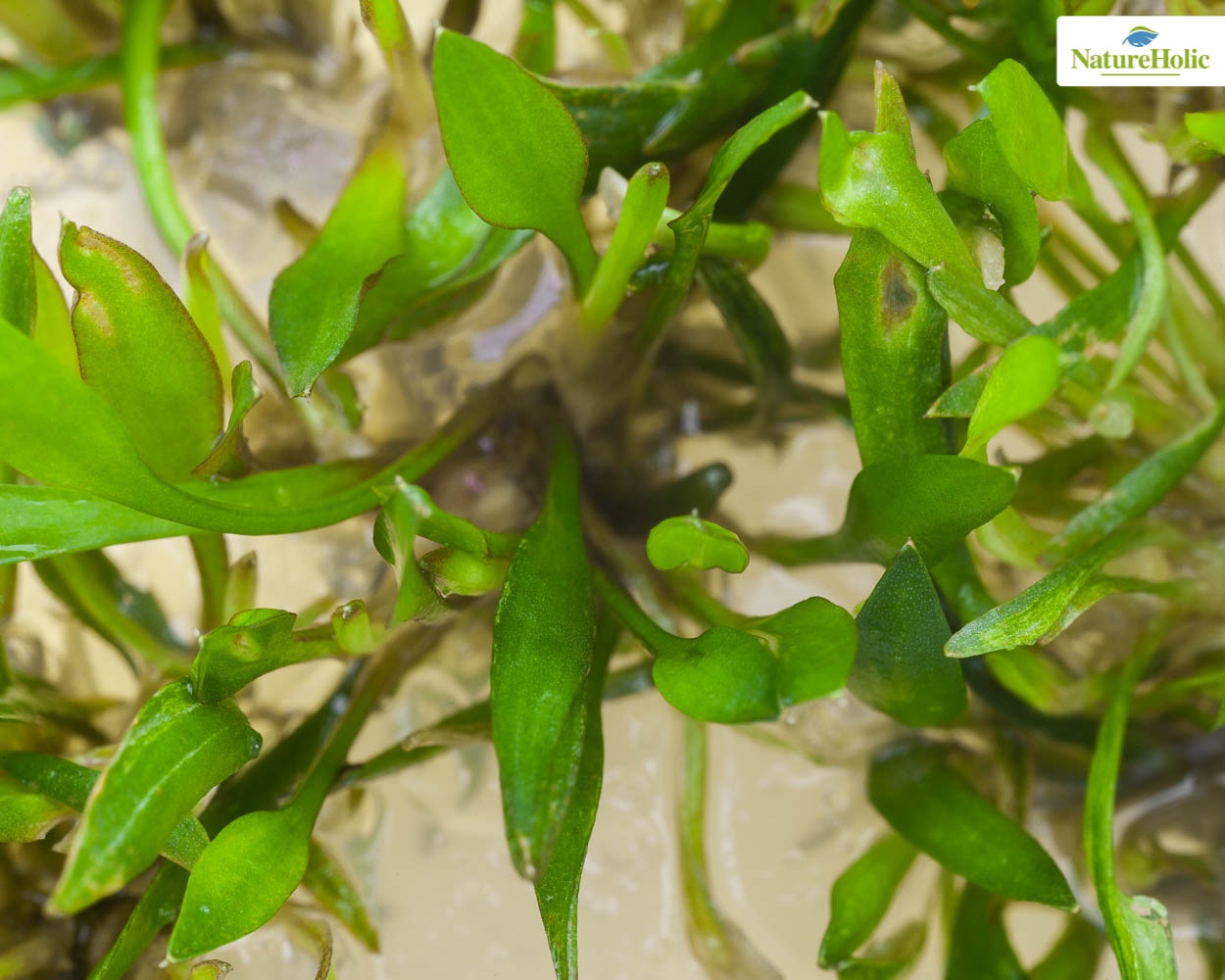
Cryptocoryne wendtii "Compact" - Compact Water Lily, Medium Brown Water Lily(InVitro/Pot)
The particularly compact growth has given this variety its name. It remains with 10-15 cm height quite small and is therefore also super to use in the nano aquarium in the middle ground. The olive green leaves are deep chocolate brown when they sprout, which makes for beautiful contrasts.
Also in the terrarium this Cryptocoryne is easy to cultivate. The reddish leaves of the terrestrial form grow to a similar height as the submerged form.

Cryptocoryne wendtii "Mi Oya" - Mi Oya Water Coryne(InVitro)
This Cryptocoryne takes its name from the Mi Oya river in Sri Lanka. With a growth height of 25-35 cm it is one of the largest varieties of the Cryptocoryne wendtii form complex and thus fits into the middle ground of rather larger aquariums. It propagates easily by daughter plants and grows relatively fast. Under low light the leaves straighten up, with more light they grow rather horizontally.
Emers it is also well suited and uncomplicated to maintain. It also grows quite large on the terrestrial part and definitely needs a nutrient rich substrate.
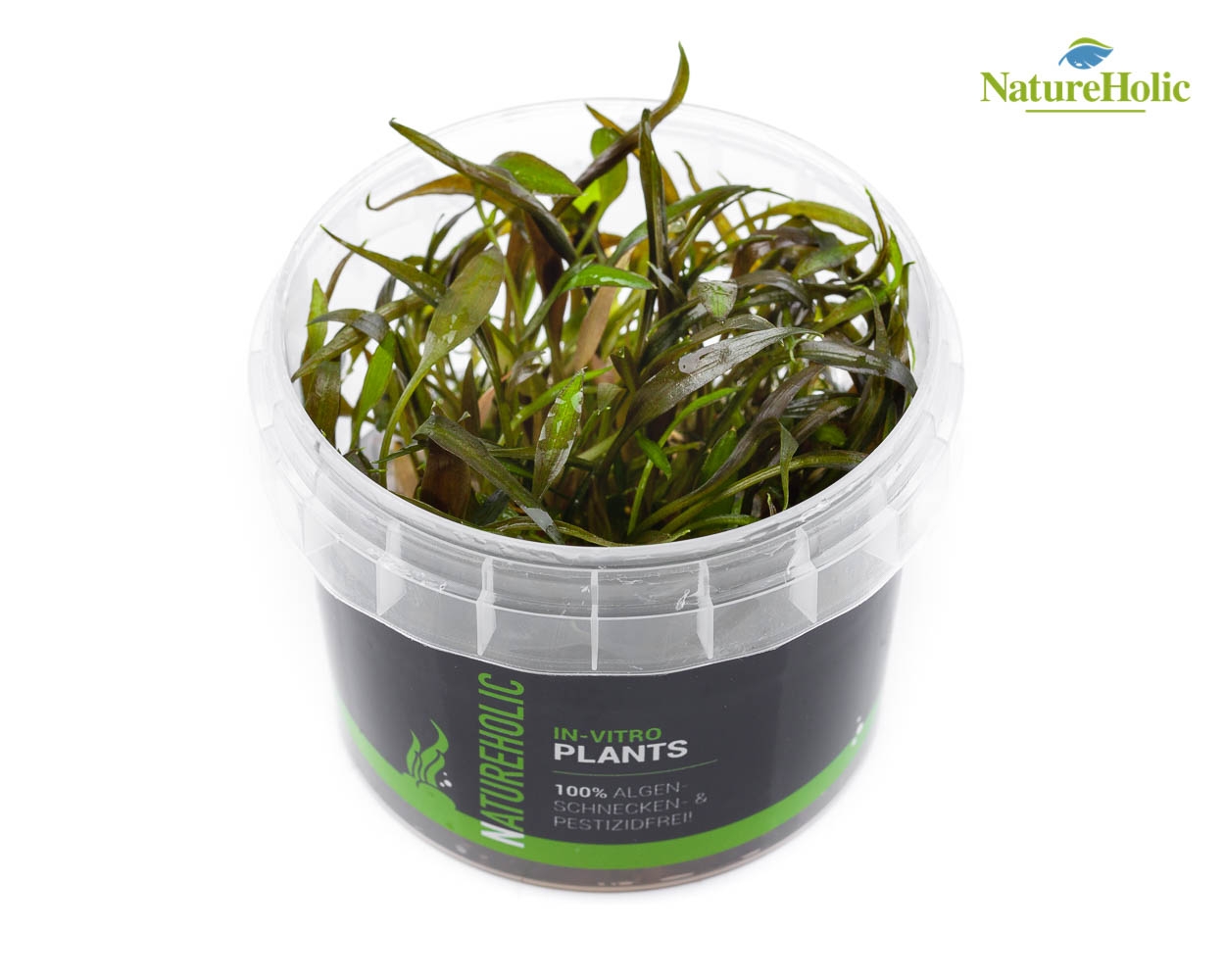
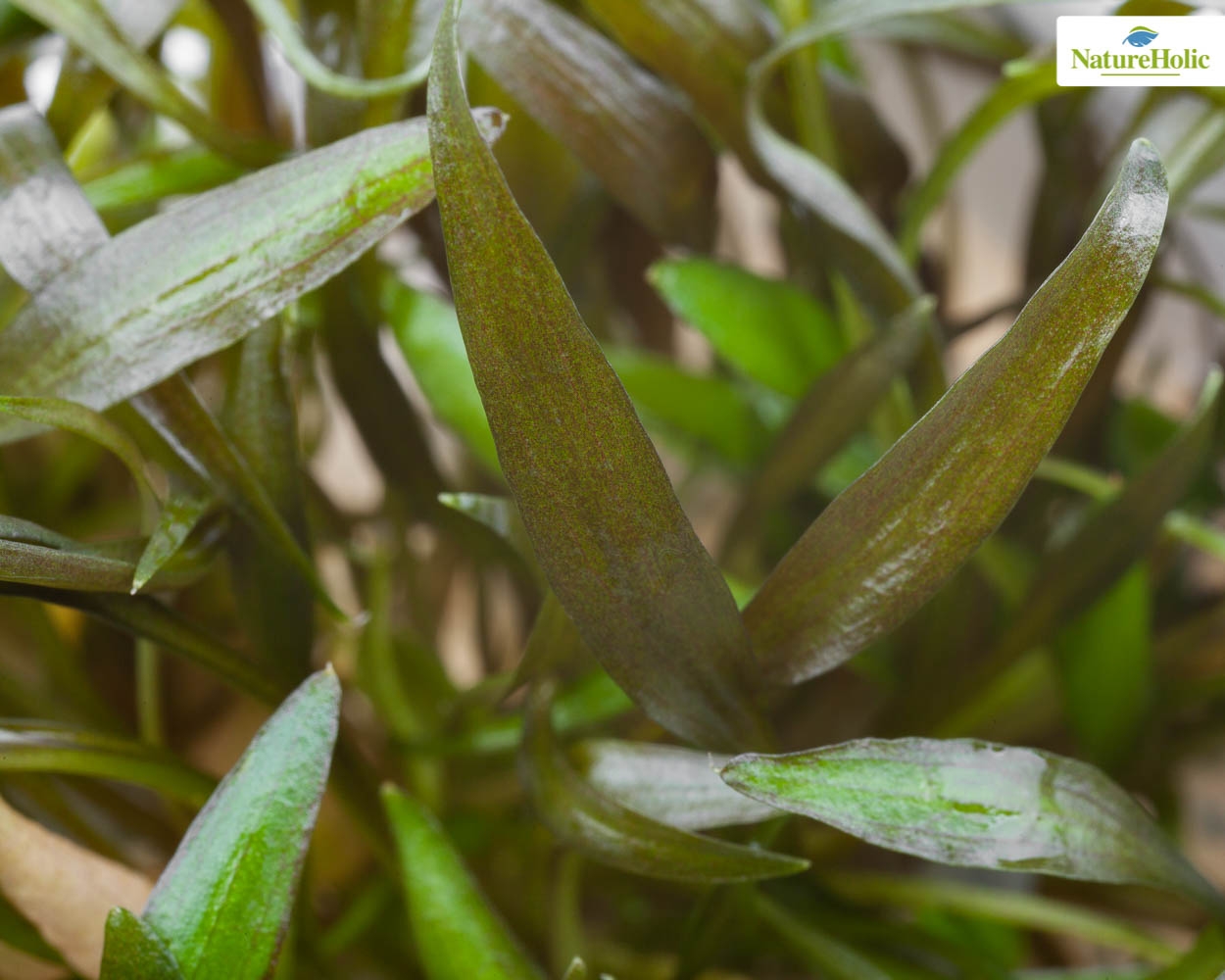
Cryptocoryne wendtii "petchii" - Petch's water lily, narrow-leaved water lily(on lava)
Petch's water lily is a Cryptocoryne from Asia, which belongs to the Cryptocoryne wendtii family. It is often referred to by its old name Cryptocoryne beckettii "petchii". This small water penny grows to a height of about 15-20 cm. The contrasting coloration is extremely attractive.
Emerse leaves are medium green to dark green and more long-stalked than the submerged form.

Cryptocoryne wendtii "Tropica" - Brown Tropica wendtii, Brown Tropica Water Cichlid(Pot)
This water carnation was grown and marketed by the Tropica nursery. Its dark brown leaves have a hammered pattern and wavy edge, and grow only to 15 inches tall. With plenty of light, they grow horizontally.
On the land part, Cryptocoryne wendtii "Tropica" grows slightly larger than the underwater form, and it also grows slightly faster.
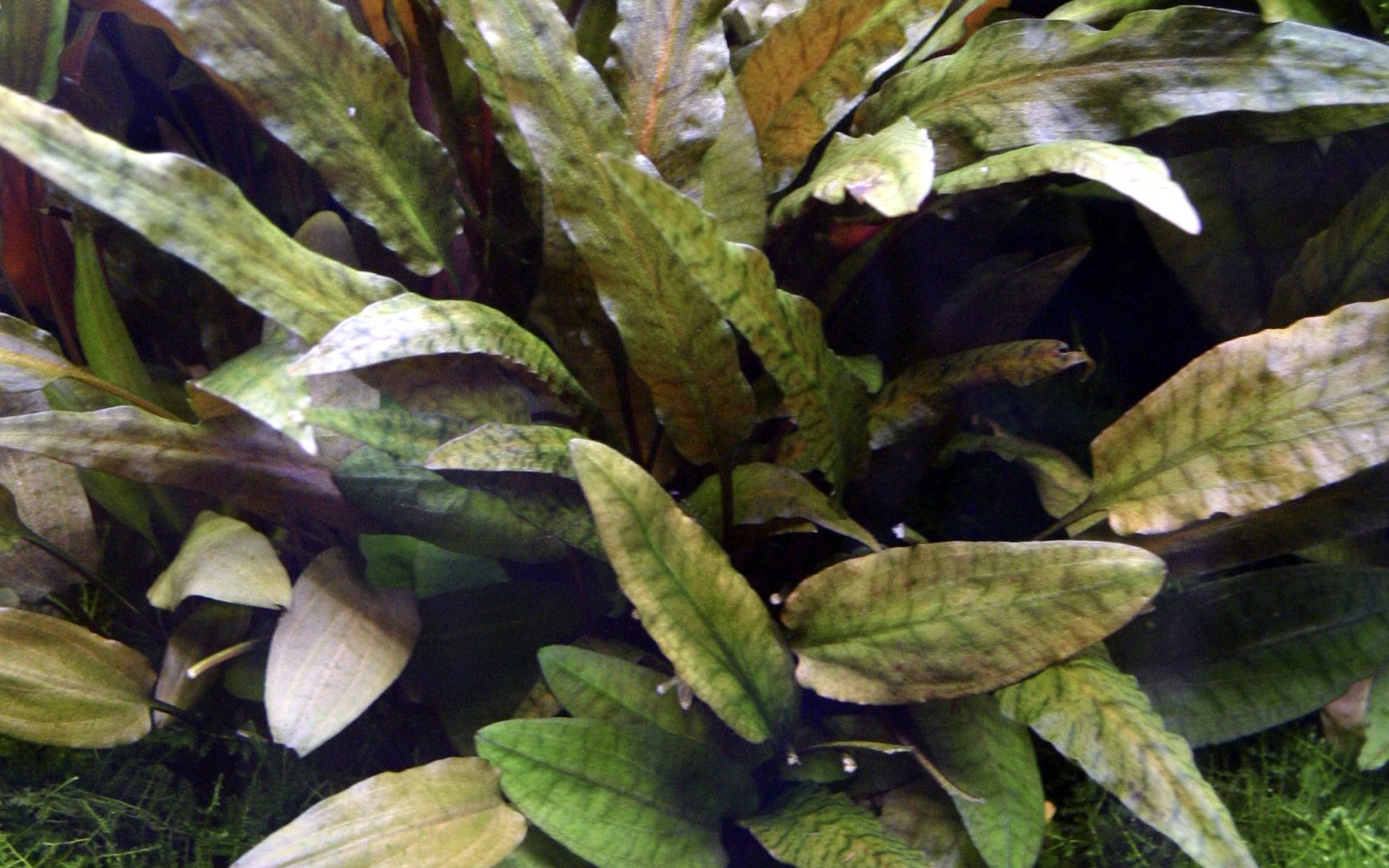
Cryptocoryne x willisii - Willis' water lily(InVitro)
Shaped like Cryptocoryne parva, medium green leaves that grow slightly larger at up to 10 cm tall, this natural hybrid from the central highlands of Sri Lanka is perfect for the middle ground in a small to slightly larger aquarium. It reproduces by underground runners.
Willis' water lily can also be cultivated very well emersed. The leaves are then somewhat larger, the plant grows up to 20 cm high.
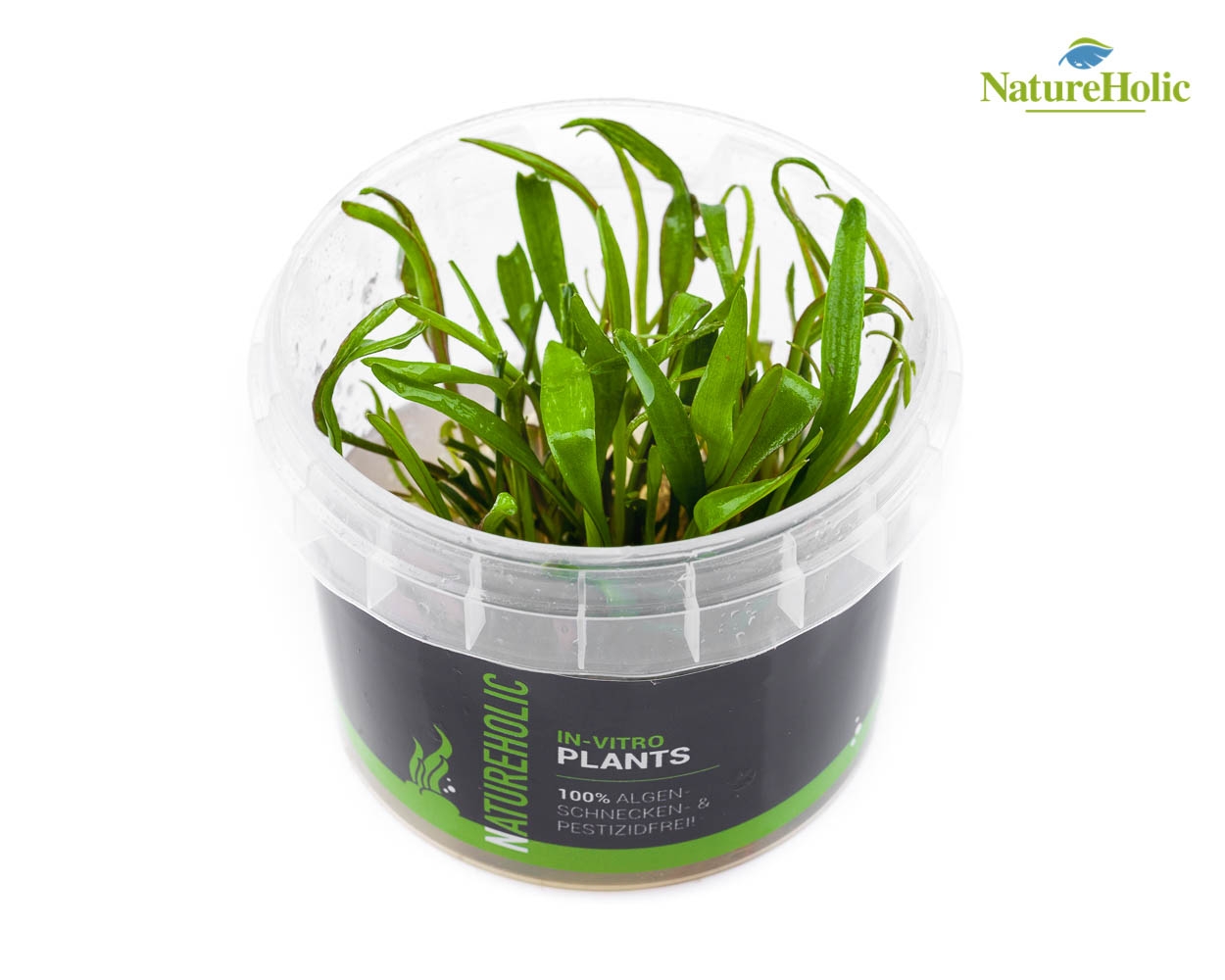
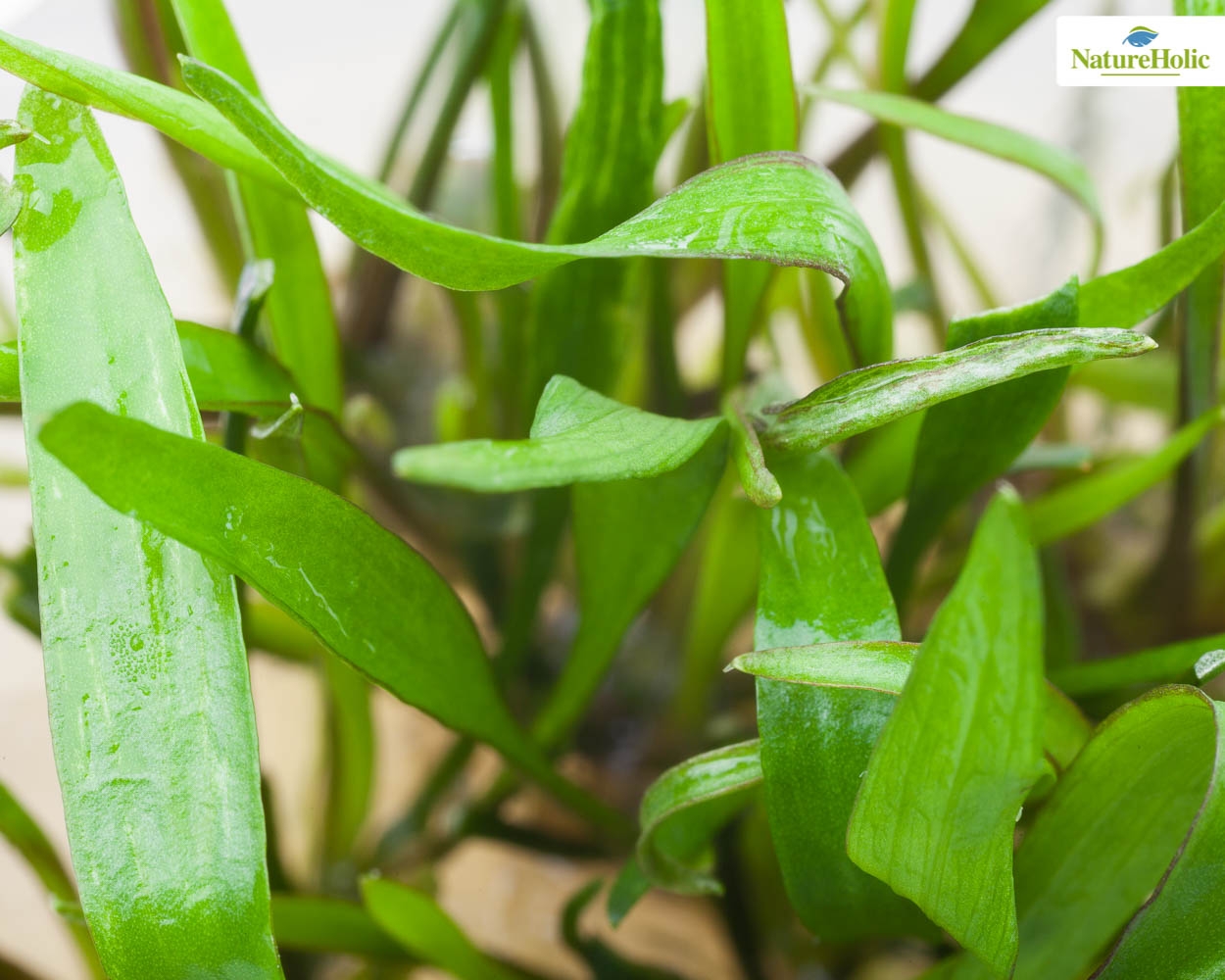
Cryptocoryne x willisii "lucens" - Dwarf Water Lily, Narrow-leaved Nevelli Water Lily(pot)
With a growth height of only 10 cm, the dwarf water carnation with its narrow green leaves is a great species for the middle ground in nano aquariums or the foreground in larger planted tanks. Also suitable for lawn plantings.
Emersely, the smooth-edged leaves grow much taller than the submerged form.

Cryptocoryne x willisii "nevillii" - Nevill's Water Coryne(InVitro)
This Cryptocoryne is a natural hybrid from Sri Lanka and grows only 10 cm tall and spreads its leaves rather horizontally under plenty of light. The leaf color is green, the leaves are slightly shorter and more ovate than Cryptocoryne x willisii.
When grown in emersed conditions, Nevill's water lily grows over 20 inches tall, making it much larger than the submerged form, and the leaves are leathery-firm.



